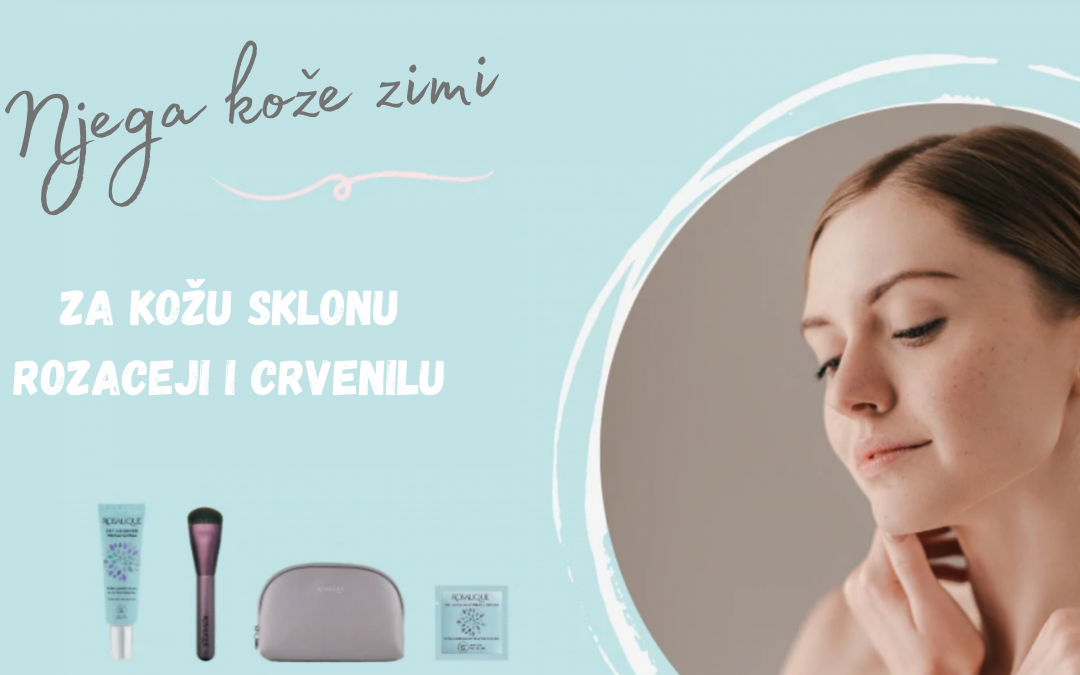- Hydration, hydration and hydration again
We’re sure you’ve heard it a thousand times, but as your skin dries out in the winter cold, it becomes more and more irritated. If you suffer from rosacea or skin redness, it’s crucial to keep your skin well-hydrated throughout the day to combat potential breakouts and dry patches. Be sure to use products that are formulated for sensitive skin and that don’t contain ingredients that can potentially irritate or dehydrate your skin. Opt for gentle, hydrating products at every step of your skincare routine, and reapply as needed throughout the day.
- Temperature control
Both inside and out, temperature control is key to controlling rosacea symptoms and redness. Try to maintain a relatively consistent temperature throughout the day and avoid extreme temperature changes if at all possible. It can be tempting to get in your car on a cold winter morning and turn on the heater and point it at your face before your nose starts to run red. Avoid this if you can! That sudden change in temperature can cause your skin to flare up. Likewise, a steaming cup of hot chocolate or tea can be incredibly tempting on a chilly winter afternoon. Don't drink it while it's still too hot, but wait until it's cooled down a bit to avoid the risk of the hot steam causing a rash on your skin.
- Inside out and vice versa
It's important to manage the changes in exposure your face will experience throughout the day. The weather outside will be cold and will tighten your face, while indoors there may be warm, dry air from fireplaces and central heating. You can mitigate this transition from one extreme to the other by covering your face. Use a scarf, hood, or something similar when you go outside, and avoid extreme heat sources, such as a heater or oven, for a while after you come back inside.
- Sun protection
The sun’s UV rays are the biggest trigger for rosacea-prone skin. It might seem counterintuitive to use SPF when it’s the middle of winter and you haven’t seen the sun in days, but it’s absolutely essential to avoid reddening your skin. There are two ways to do this – the first is obvious – by applying sunscreen! Ideally, you should do this all year round, including in the winter. Use at least SPF 30 to prevent the effects of sun exposure. Another way is to avoid direct sun exposure. You can opt for a stylish wool winter hat with a brim when you’re outside, and don’t forget to put on your sun protection when you’re in the car for a long time.
- Overlay (gently) – if desired
We don’t think anyone should be ashamed of their rosacea or redness, but we also know that it makes many of our beautiful users feel insecure. Redness can make you feel uncomfortable, and of course what can happen when you’re uncomfortable is… more redness. If you feel more comfortable covering up your redness, do it! Again, be sure to avoid any products that could irritate your skin further in the long run.
Rosalique is designed for the sensitive skin of rosacea sufferers and will not only give you instant coverage, but also gently treat skin inflammation. Studies have shown that Rosalique reduces redness when used daily for 6-8 weeks. Furthermore, it provides beautiful, natural-looking coverage and also protects you from broad-spectrum UV rays with its SPF50.
We hope these tips are helpful as you battle rosacea symptoms during the winter. By taking care of yourself, you can prevent further rosacea flare-ups and feel great in your own skin!

